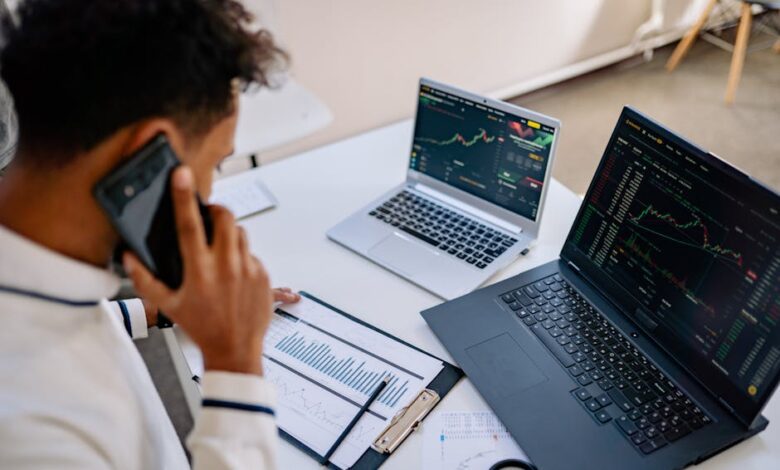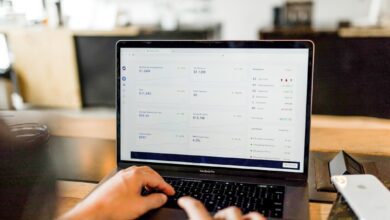Metals in Motion: Analyzing Industrial Demand, Investment Strategies, and Market Trends

In an increasingly complex and interconnected global economy, the role of metals—both precious and industrial—has never been more critical. From the dual utility of silver as a key player in both industrial applications and investment portfolios to the economic health indicators provided by fluctuating copper prices, the landscape of metal markets is a reflection of broader financial and environmental trends. As the demand for rare earth metals surges in response to the growth of green energy technologies, investors must navigate a shifting terrain characterized by the competition between platinum and palladium and the implications of inflation on metal prices. Furthermore, understanding the future of aluminum in a sustainable economy alongside the impact of mining regulations on metal prices is essential for those looking to diversify their investment portfolios. This article delves into these pressing topics, offering insights and strategies for navigating the dynamic metals market in a sustainable future.
- 1. "Silver's Dual Role: Industrial Utility and Investment Appeal"
- 2. "Copper Prices as Economic Indicators: What They Reveal About Global Trends"
- 3. "Navigating the Metals Market: Investment Strategies in a Sustainable Future"
1. "Silver's Dual Role: Industrial Utility and Investment Appeal"
Silver plays a unique dual role in both industrial applications and as an investment vehicle, making it a versatile asset in financial markets. On the industrial side, silver is highly valued for its superior conductivity, thermal properties, and antibacterial qualities. It is widely used in electronics, solar panels, medical devices, and various manufacturing processes. As industries increasingly adopt advanced technologies and renewable energy solutions, the demand for silver is expected to grow, particularly in the burgeoning solar energy sector where silver is a critical component in photovoltaic cells.
Simultaneously, silver holds significant appeal as an investment option. Often referred to as the "poor man's gold," it has historically been viewed as a hedge against inflation and currency devaluation. Investors flock to silver during economic uncertainty, seeking the safety of tangible assets. Furthermore, silver’s price tends to move in correlation with gold, attracting investors looking for diversification within the precious metals sector. The precious metal also benefits from its liquidity and lower entry price compared to gold, making it accessible to a broader range of investors.
The interplay between silver's industrial demand and its investment allure creates a dynamic market. Economic growth, technological advancements, and shifts in investment trends all influence silver prices, making it a barometer of both industrial activity and investor sentiment. As the world transitions to more sustainable practices and industries evolve, silver's dual role is likely to become increasingly significant, underlining its importance in both the industrial landscape and investment portfolios.
2. "Copper Prices as Economic Indicators: What They Reveal About Global Trends"
Copper prices have long been regarded as a barometer for global economic health due to the metal's widespread use in various industries, including construction, electronics, and transportation. As a key component in electrical wiring and plumbing, fluctuations in copper prices often signal changes in industrial activity and consumer demand. When economies are thriving, demand for copper typically rises, driving prices higher. Conversely, during economic downturns, reduced demand can lead to falling copper prices, reflecting a slowdown in manufacturing and construction.
Investors and analysts closely monitor these price movements to gauge economic trends. For instance, a sharp increase in copper prices may indicate robust economic growth, as industries ramp up production to meet rising demand. On the other hand, a sustained decline in prices can suggest economic uncertainty or contraction, prompting concerns about potential recessions.
Global events also significantly influence copper prices. Trade tensions, geopolitical conflicts, and fluctuations in currency values can lead to price volatility. Additionally, the growing emphasis on infrastructure development in emerging markets, particularly in Asia, has further solidified copper's role as a vital economic indicator. As these nations invest in large-scale projects, demand for copper surges, often pushing prices upward.
Furthermore, the transition to renewable energy and electric vehicles is expected to bolster copper demand in the coming years. With copper being essential for energy-efficient technologies, its prices may reflect not only current economic conditions but also future trends in sustainable development. Thus, monitoring copper prices offers valuable insights into both present economic health and anticipated shifts in global markets.
3. "Navigating the Metals Market: Investment Strategies in a Sustainable Future"
As the world shifts towards sustainability, navigating the metals market requires a strategic approach that balances investment opportunities with environmental considerations. Investors are increasingly focusing on metals that support green technologies, such as lithium, cobalt, and nickel, which are essential for batteries in electric vehicles and renewable energy systems. Understanding the demand dynamics of these metals is crucial, as their prices can be significantly influenced by global policies aimed at reducing carbon emissions.
Diversification remains a key strategy in this evolving market. Investors should consider a mix of precious metals, like gold and silver, known for their stability during economic uncertainty, alongside industrial metals that are integral to technological advancements. This combination can help mitigate risks associated with market volatility while capitalizing on growth opportunities in the green energy sector.
Moreover, staying informed about mining regulations and sustainability practices is vital. Regulations can impact supply chains and, consequently, metal prices. Investing in companies that prioritize sustainable mining practices not only aligns with ethical considerations but can also be a smart financial move, as they may be better positioned to adapt to regulatory changes and consumer preferences.
Finally, engaging with trends in circular economies, where metals are recycled and repurposed, can offer additional investment avenues. Companies that innovate in recycling technologies or that focus on the lifecycle management of metals are likely to gain a competitive edge in a market increasingly driven by sustainability. By integrating these strategies, investors can navigate the metals market effectively, positioning themselves for success in a sustainable future.
In conclusion, the complex landscape of metal markets reveals the multifaceted roles that various metals, including silver, copper, and rare earth elements, play in both industrial applications and investment strategies. Silver stands out for its unique position as both a critical industrial component and a sought-after investment asset, reflecting broader trends in market demand and economic stability. Meanwhile, copper prices serve as a barometer for global economic health, providing insights into growth and recession cycles.
The increasing emphasis on green energy technologies is reshaping the demand for rare earth metals, highlighting the intersection of sustainability and investment opportunities. Similarly, the ongoing debate between platinum and palladium as investment options underscores the importance of understanding market dynamics and individual preferences in portfolio diversification.
As inflation continues to impact the prices of precious and industrial metals, investors must navigate these fluctuations carefully, considering the long-term sustainability of their investments. The future of aluminum, particularly in a sustainable economy, presents both challenges and opportunities, reflecting the evolving priorities of industries and consumers alike. Finally, the implications of mining regulations on metal prices cannot be overlooked, as they play a crucial role in shaping the supply landscape.
In an ever-changing market, staying informed about these factors is essential for both investors and industry stakeholders. By understanding the intricate relationships between these metals and their broader economic context, we can better navigate the complexities of the metals market and make informed decisions that align with our financial goals and environmental responsibilities.





